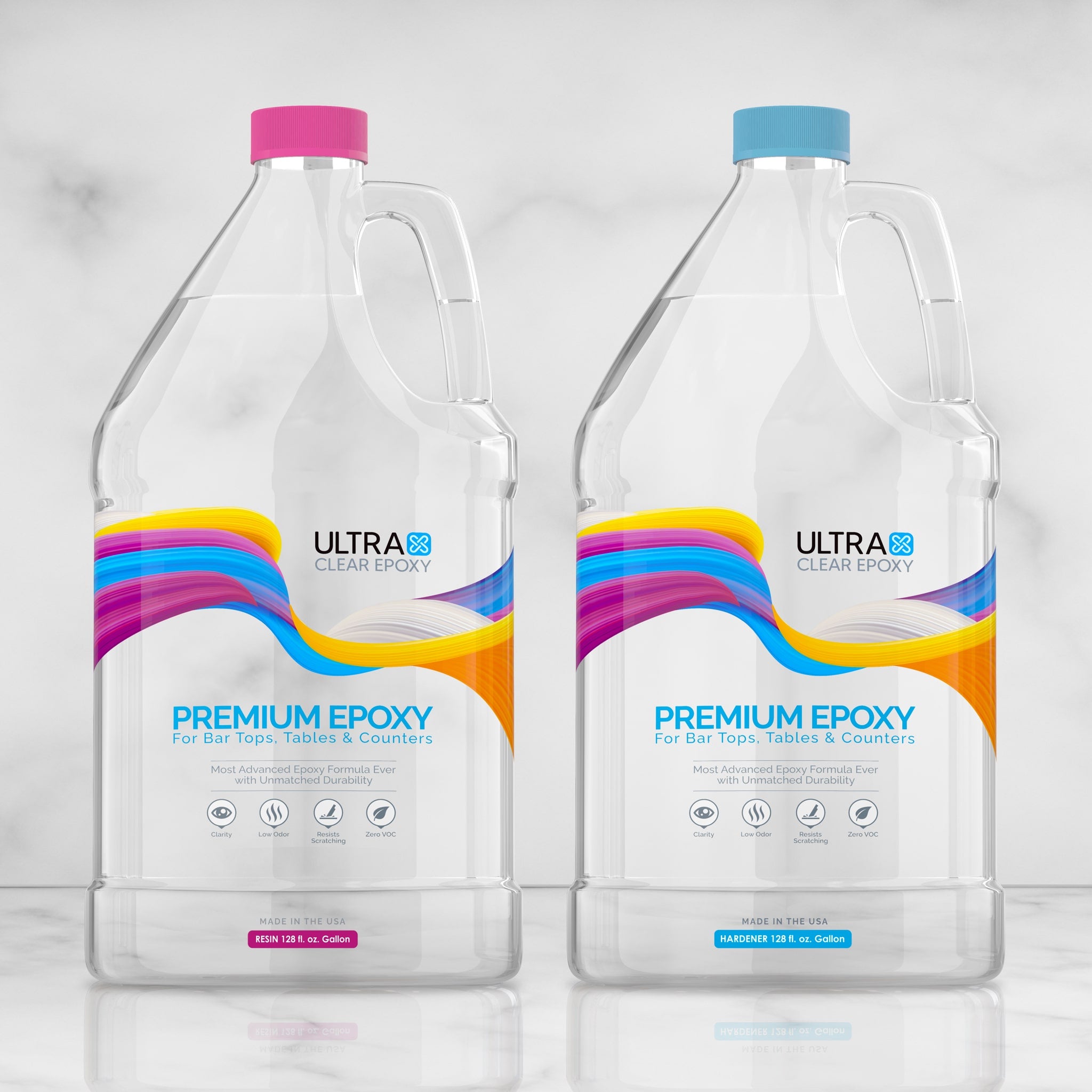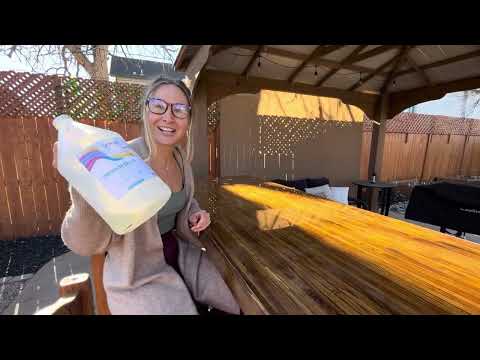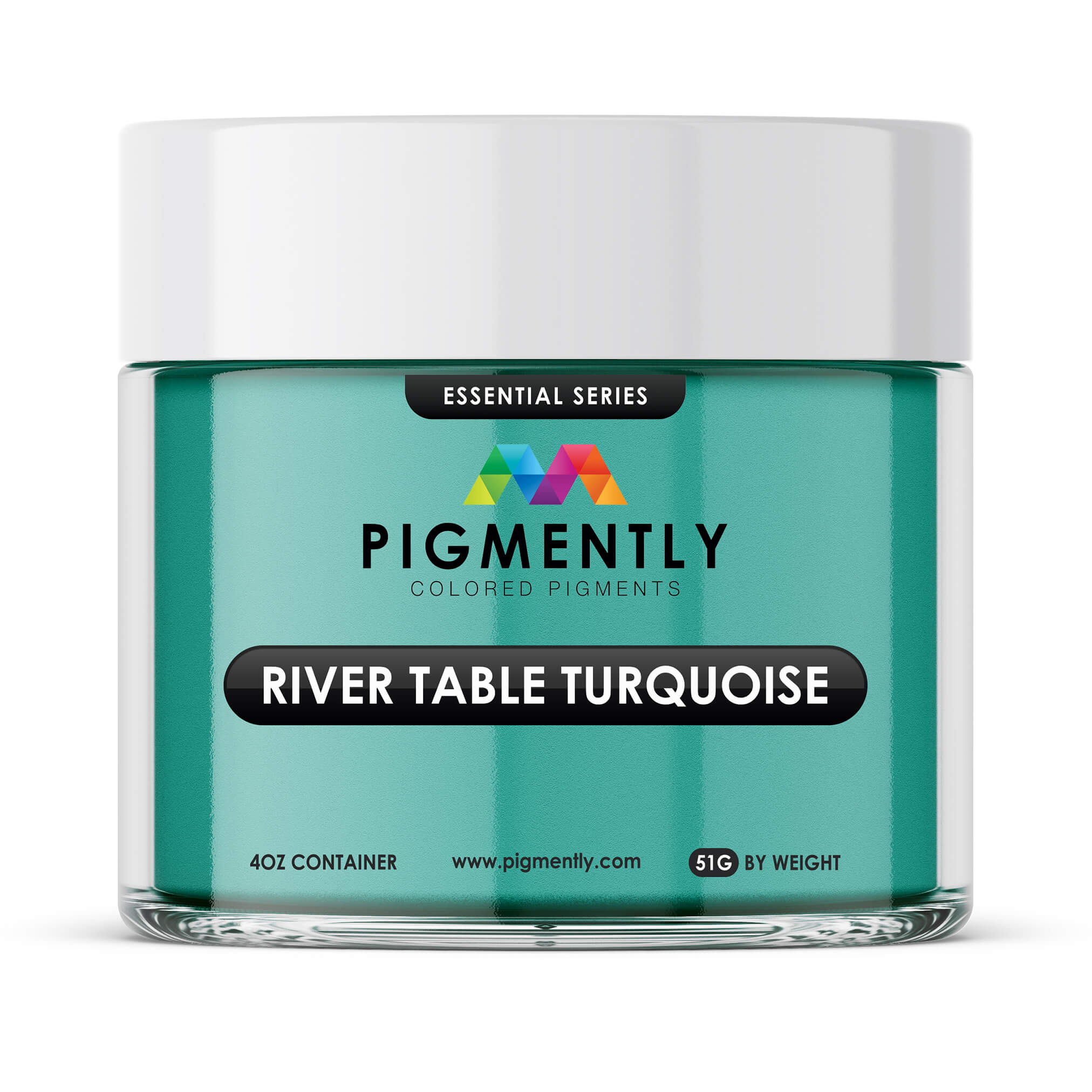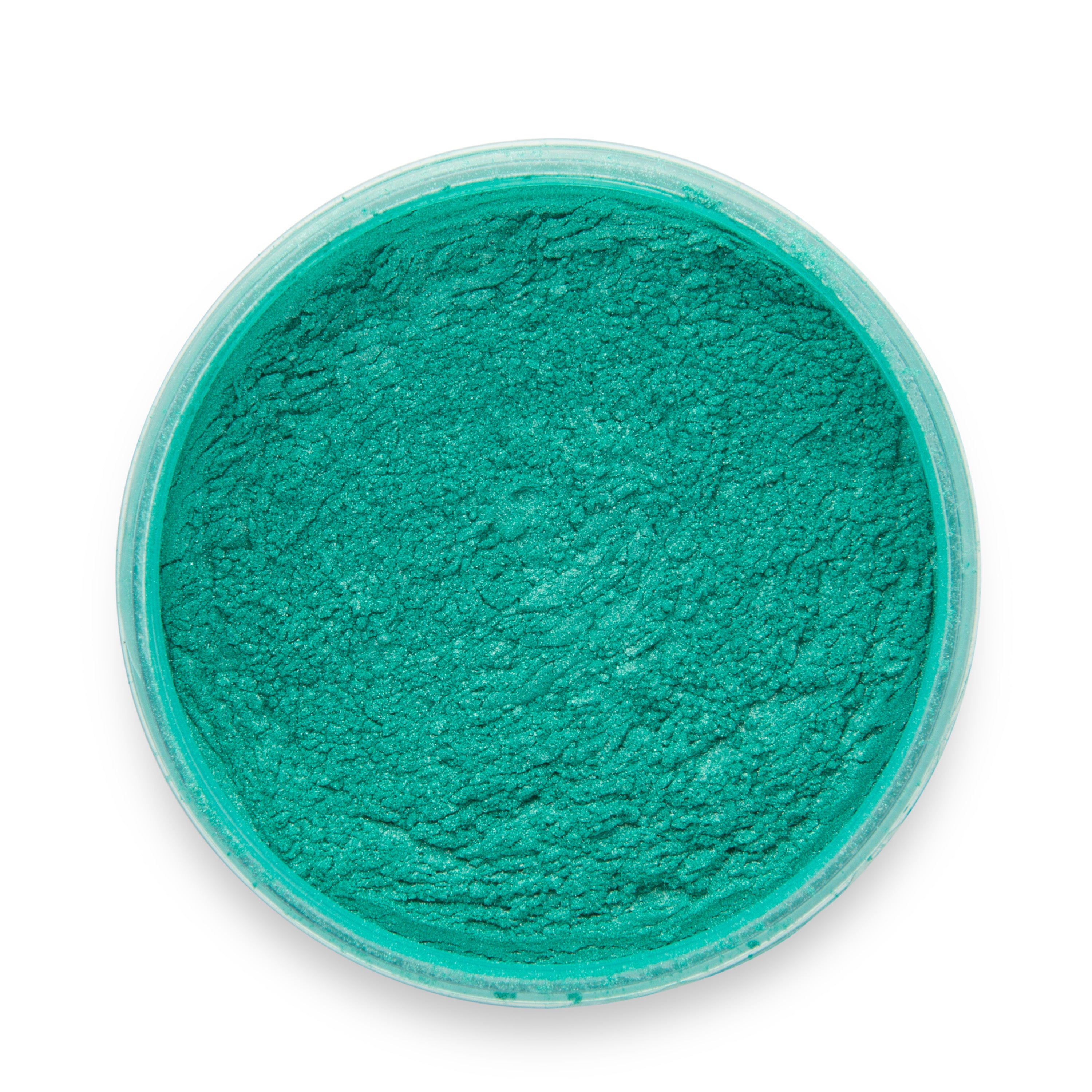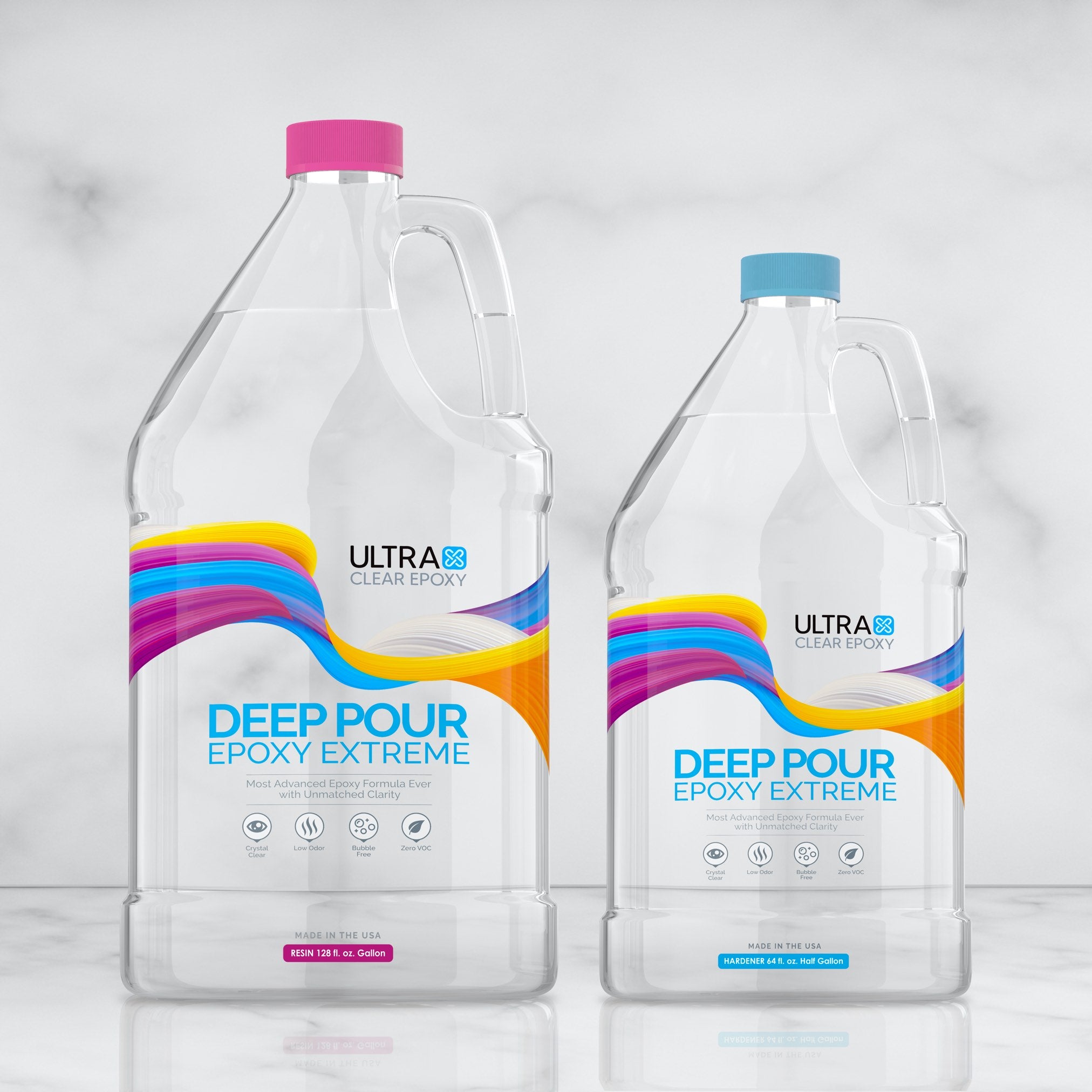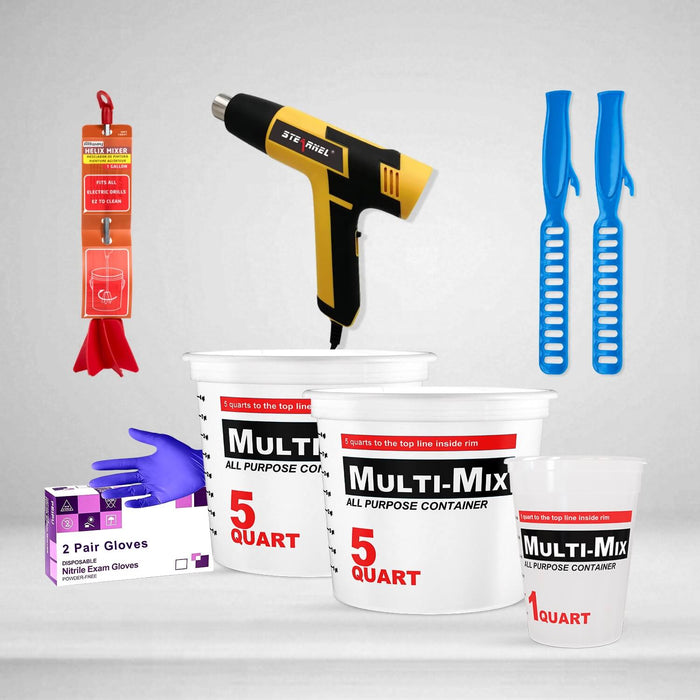Among epoxy hobbyists, flowers are a fan favorite embedment. But for users who aren't familiar with the effort, it's not immediately clear how to do so properly.
In this article, we'll be explaining how to embed flowers within your epoxy resin finish in a way that doesn't result in cloudiness, decay, or similar issues.
Before they can be used, the flowers must be fully dried
Unlike most typical embedments, putting flowers in epoxy requires some extra preparation beforehand. Because they contain water and can decay, they first need to be fully dried until no moisture remains.
Here are 4 reasons why it's necessary:
#1: To prevent clouding and discoloration.
Moisture in flowers can react with the epoxy resin during the curing process, causing the resin to become cloudy or discolored. This detracts from the clarity of the resin, marring your otherwise beautiful creation.
#2: To ensure complete curing.
Water from the undried flowers can interfere with the chemical reaction that hardens the epoxy. This can lead to areas within the resin that remain sticky or tacky, as the epoxy may not cure properly or uniformly.
#3: To prevent the formation of bubbles.
As the flowers embedded in the resin dry out and any water they contained evaporates, it can turn into gas and form bubbles within the cured resin. These bubbles can ruin the aesthetic of the piece, making it look flawed or less professional.
#4: To prevent decay and mold growth.
Over time, any residual moisture in the flowers can lead to decay or mold growth within the resin. This not only affects the appearance but can also compromise the structural integrity of the resin piece.

So how do you dry the flowers?
Drying the flowers prior to embedment is relatively straightforward. Most of these methods require multiple weeks for full drying, with one method that is faster but trickier to pull off.
Drying Method #1: Hanging them.
Pros/Cons
- An easy method, requiring nothing but the flowers.
- Can take a while.
- Loss of some color is common and can be undesirable.
This first method is also the most conventional. Take the flowers you intend to use and bind them in small bouquets. Hang them upside down in a dry space, then let them dry.
This method is effective but slow, usually taking between 2 to 4 weeks. Because the flowers are exposed and being dried naturally, they tend to lose some of their color.
Depending on your aesthetic goals, the loss of color may be acceptable or even desired, but for those who prefer to better preserve the color, other methods are more suitable.
Drying Method #2: Desiccant immersion.
Pros/Cons
- Tends to preserve the color well.
- Can take a while.
Our second method is to immerse the flowers in a layer of desiccants—usually silica gel. This will draw out the moisture while allowing the flowers to retain much of their shape and color.
This method is very effective, but can still take a few weeks to completion.
Drying Method #3: Pressing
Pros/Cons
- Very easy method using a flat heavy object such as a book.
- Leaves the flowers flattened, which can make crafting easier.
- Some color loss, depending on the plant type.
The third method involves pressing the flowers between two flat surfaces until they've fully dried. Use something heavy for the top surface.
This method sometimes is faster than the others, though you still want to be cautious about ending it too soon. The amount of flowers you can dry at once is determined by the surface area of the object on top of them.
Pressing also leaves the flowers looking flattened, which may sound bad but in many cases is preferable for art, including when embedding flowers in epoxy. The flowers become much easier to position and immerse within the epooxy coating.
Drying Method #4: Microwave the flowers
Pros/Cons
- Much faster than the other methods.
- It's easy to ruin the flowers by overheating.
The fourth and final method of drying flowers is to heat them in a microwave. This can be done a few different ways.
Silica Gel
First, you can immerse them in a microwave-safe bowl with silica gel. Super fine grain is ideal for delicate flowers and can work with any other flower type, too. Larger grain may be able to speed up the flower-drying process, but can damage fragile parts of the flowers.
For this method, simply add some of the gel, put the flowers on, then add more gel to cover them. Microwave the contents for 30 seconds at a time then carefully check on them. Repeat until they're dry enough. Then let the container cool, cover it, and let it sit overnight.
The next day they should be dry, at which point you can remove them and use them in your projects.
Pressed in Paper
You can also press the flowers while microwaving them. To do this, first place the flowers on one side of a piece of parchment paper and fold the other side over them. Then place the parchment containing the flowers in the microwave, and put a flat-bottomed container or some other microwave-safe object on top to press down evenly on the flowers.
Once you've done that you can begin microwaving them. Do 10 to 20 seconds at a time, and check on the flowers (especially the petals, which are most fragile) each time.
Once they're dry enough, remove them from the microwave. Give them some more time to settle until they're fully dry, then they'll be ready for use in your projects!
Additional Notes
- For methods involving desiccants, some users opt for sand instead of silica gel. This can work but it's less effective.
- The silica gel can be reused after it's been filtered and dried. Use a mesh strainer to clear out the remaining flowers bits and allow the silica gel to dry (you can use the microwave to hasten this process). Once that's happened, the gel will be ready for additional flowers.
- We recommend using gloves when working with the silica gel or other fine/sticky substances.
Drying may seem tedious, but it's necessary (and worth it).
Regardless of which method you opt for, once your flowers are dry you'll be able to put them to use in any kind of craft projects you have in mind. Consider experimenting with a variety of flowers to see how different types fare under the various drying methods.
A step-by-step guide to embedding flowers within epoxy.
The actual process of embedding flowers within epoxy is not terribly difficult, requiring a little extra care when compared to ordinary resin projects.
Step #1: Gather your materials
Begin by gathering and preparing the materials you need for your project. This includes the dried flowers, epoxy, and a suitable resin mold.
The dried flowers
To get the dried flowers, simply gather flowers of your choice and use the methods above for drying them.
The epoxy resin
For most projects of this type, we recommend our UltraClear Art & Craft Epoxy. This epoxy is designed for art projects, including those involving resin molds. If extra thick epoxy layers are needed for your project, we recommend using our UltraClear Deep Pour Epoxy. This variant supports much greater layer depth than most epoxies, allowing one to fully immerse the flower embedments in a deep resin mold without generating bubbles.
The resin mold(s)
As for resin molds, there are many different shapes and sizes out there, so choose whatever suits your needs.

Step #2: Clean and dry your resin mold(s).
Prior to the epoxy process, make sure your resin mold is clean and completely dry. We've written a guide on how to do this, which you can view here.
You can also spray the mold with a mold release to make removing your resin creation from it easier.
Step #3: Prepare your first epoxy batch.
Next up is mixing the initial batch of epoxy resin. For most projects, there will be two batches total.
The first epoxy batch should be enough to partially fill the mold, but not fully. The goal is for the first epoxy layer to stop right where you want your flowers situated.
Mixing up an epoxy resin batch involves measure out proportional amounts of the two epoxy components—resin and hardener—into a suitable mixing container, then blending them together.
For more advice on mixing epoxy, read our guide here.
Advice: Follow the instructions for optimal results.
Most epoxy resins come with a set of detailed instructions, either as separate documents or directly on the bottle—and sometimes both. Follow these to achieve a proper blend.
For UltraClear Epoxies, you can also view the instructions on our support website, using the following links:
- UltraClear Art & Craft Epoxy Instructions
- UltraClear Deep Pour Epoxy Instructions
- UltraClear Bar & Table Top Epoxy Instructions
Once your batch of epoxy is blended, move onto step 4.

Step #4: Pour the first layer of epoxy.
After mixing up your initial batch of resin, it's time to apply it. This part is pretty straightforward. Simply pour the epoxy from the container into your resin mold, until it's at the depth you need for your flower placement.
Once that's done, you can use a heat gun or torch briefly to remove any air bubbles that show up. Either way, give it some time to cure before moving to the next step—at least 4 hours, though more may be needed for heavier plant embedments.

Step #5: Arrange the flowers as desired.
At this point, it's time to embed the dried flowers. There are a couple different methods for accomplish this.
The Partial Cure Method
This method involves applying the flowers after letting the epoxy partially cure. The benefit is that it's faster and involves fewer steps. The downside is that there's a slightly higher risk of mistakes if you're not careful.
- After applying the base layer of epoxy, let it nearly cure (it should still be soft).
- Add the flowers atop the tacky epoxy.
- Move to Step 6, wherein you'll apply the final epoxy coating.
The Full Cure Method
This method has more steps and takes longer, but guarantees your flowers will settle right where you place them without risk of sinking into a deep layer.
- Wait until the base layer of epoxy has fully cured.
- Add a very thin layer of epoxy, this will be what you place the flowers on.
- Position the flowers on the new, thin epoxy layer. The fresh epoxy will keep them in place as it begins to cure.
- Move to Step 6, wherein you'll apply the final epoxy coating.

Step #6: Mix and pour the second layer of epoxy.
After you've positioned your flowers, it's time to apply the remaining epoxy.
- Mix up a second batch of epoxy, enough to fill the remainder of your resin mold.
- Pour it deliberately to avoid the creation of air bubbles.
- Very carefully use a heat gun or torch to remove any air bubbles that do show up.
Step #7: Let the project fully cure, then demold.
The rest of the project is super easy. Simply maintain proper curing conditions (to the best of your ability) and let the resin flower project fully cure.
Depending on the epoxy used and the climate conditions of your project space, curing may take anywhere from 24 to 96 hours. Check your epoxy instructions for more information.
Once the curing is complete, remove the resin piece from the mold, and you're done!
Further modifications can be made at this point, depending on the type of project and your goals—for example, affixing a jump ring if you made resin jewelry.

Additional Resources
Here are some additional resources you may find useful:
- Our step-by-step guide to making resin jewelry—Learn how to make resin jewelry with this beginner's guide.
- 5 common slip-ups to avoid when mixing epoxy resin—Learn how to avoid mistakes some users make when mixing their epoxy batches.
- How epoxy resin "budget brands" compromise your health and safety—Choosing an epoxy brand and type is the first big crucial step in any project. Learn why some resins aren't safe to use here.

Have questions? Want advice? Contact us!
If you have any unanswered questions about embedding flowers within epoxy resin, or if you'd like assistance in planning an epoxy project, please reach out to us at UltraClear Epoxy—our epoxy experts are ready to assist!
You can contact us via phone or email here. During business hours, you can also text chat online with one of our resin specialists by clicking the Help button at the bottom of your screen.
In our online store, you'll find a variety of useful tools and supplies, ideal for resin projects, plus our award-winning UltraClear Bar & Table Top Epoxy and our UltraClear Deep Pour Epoxy.



